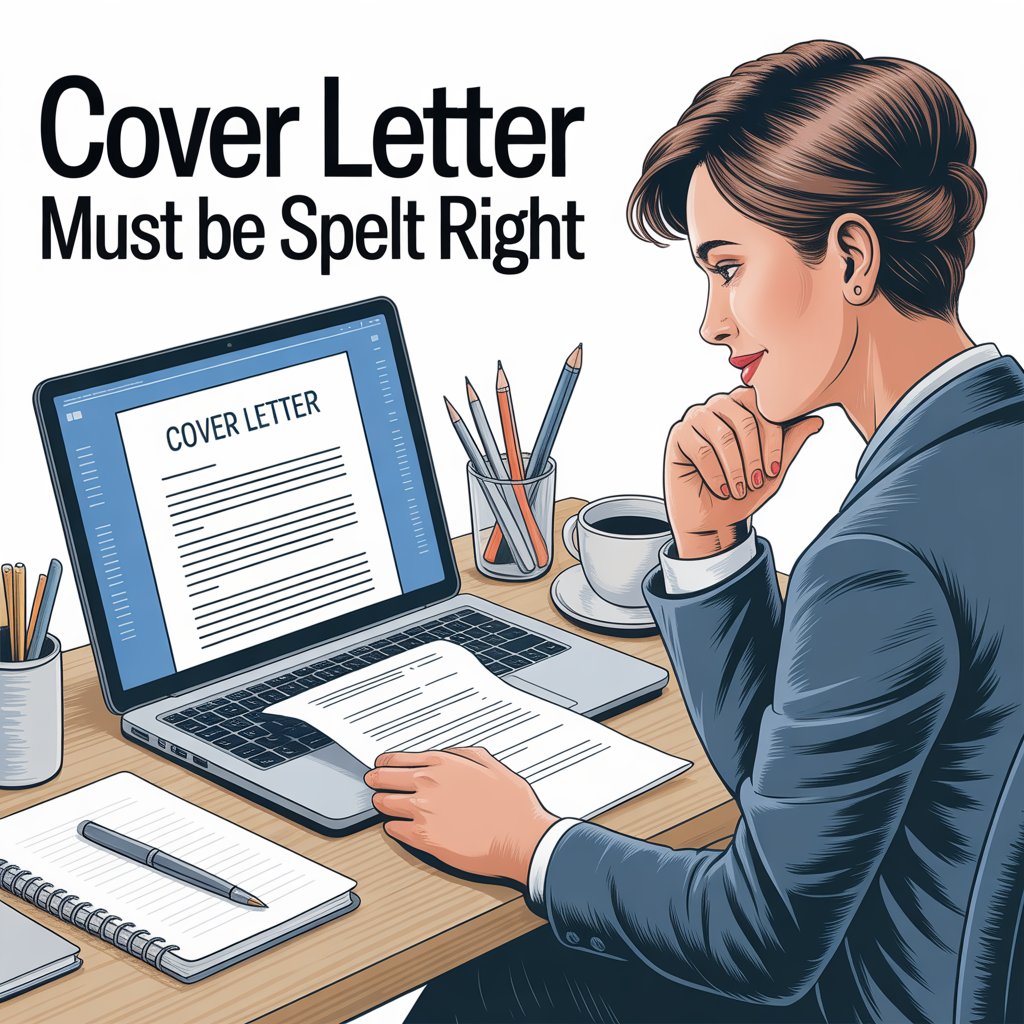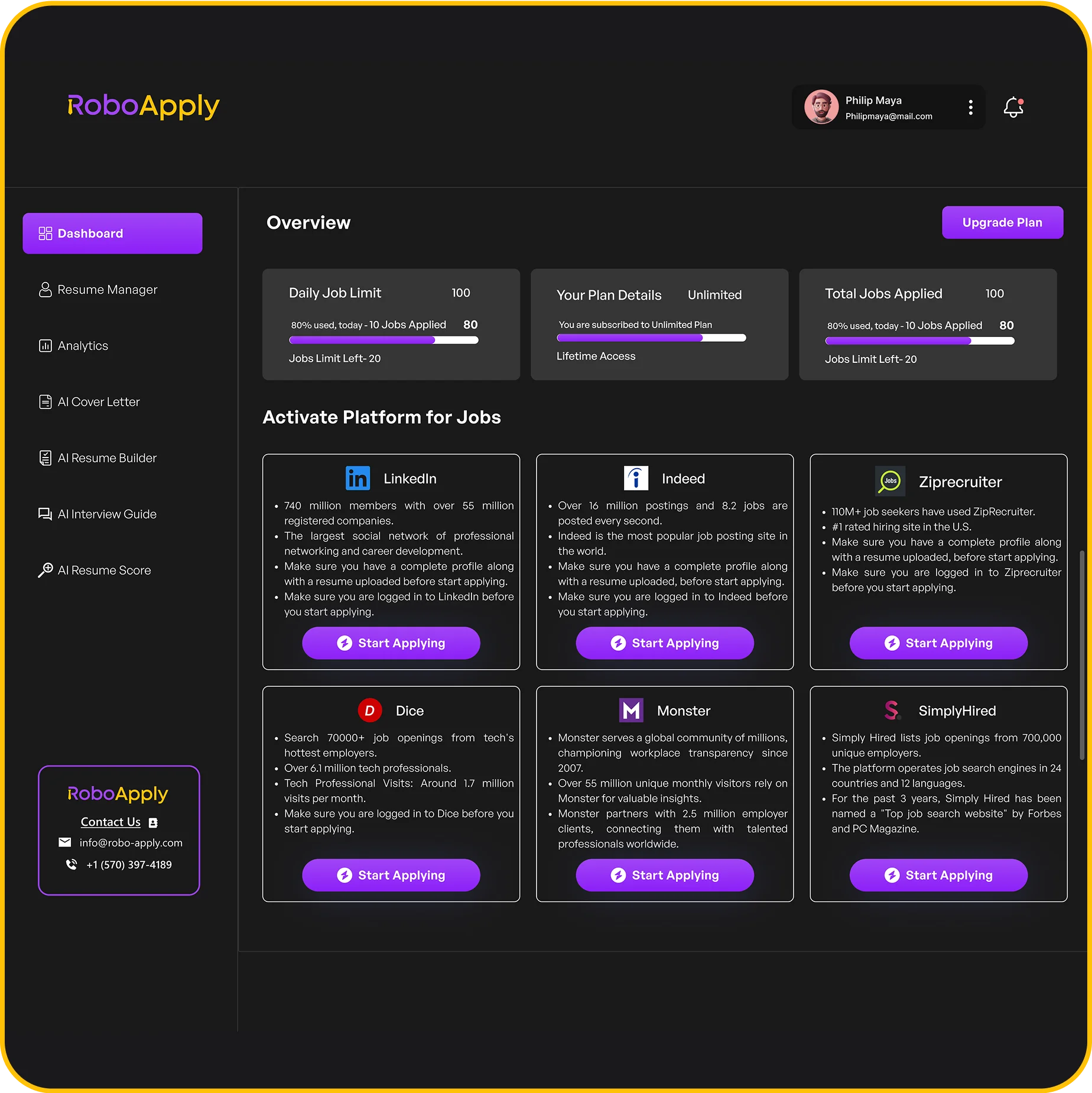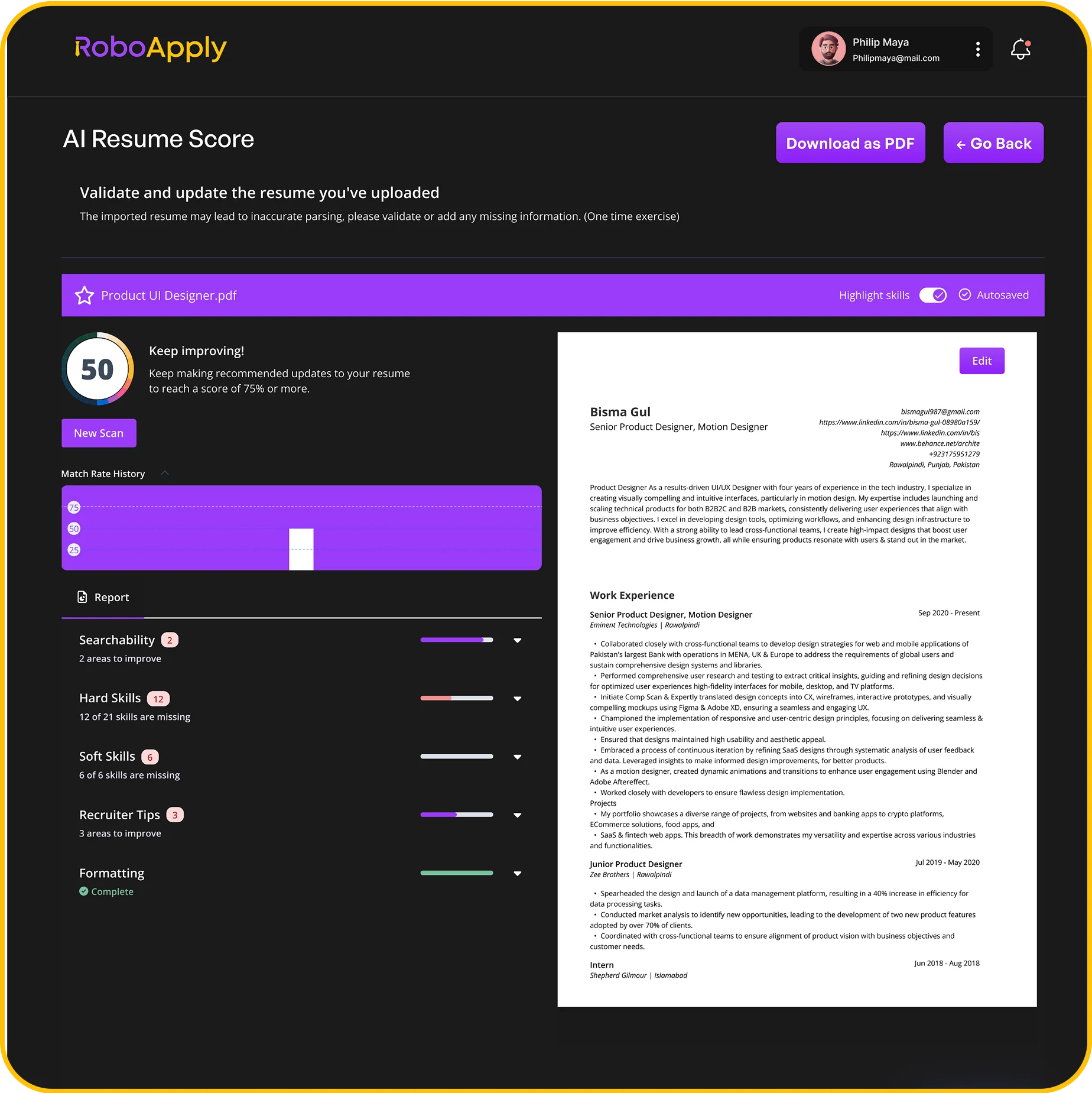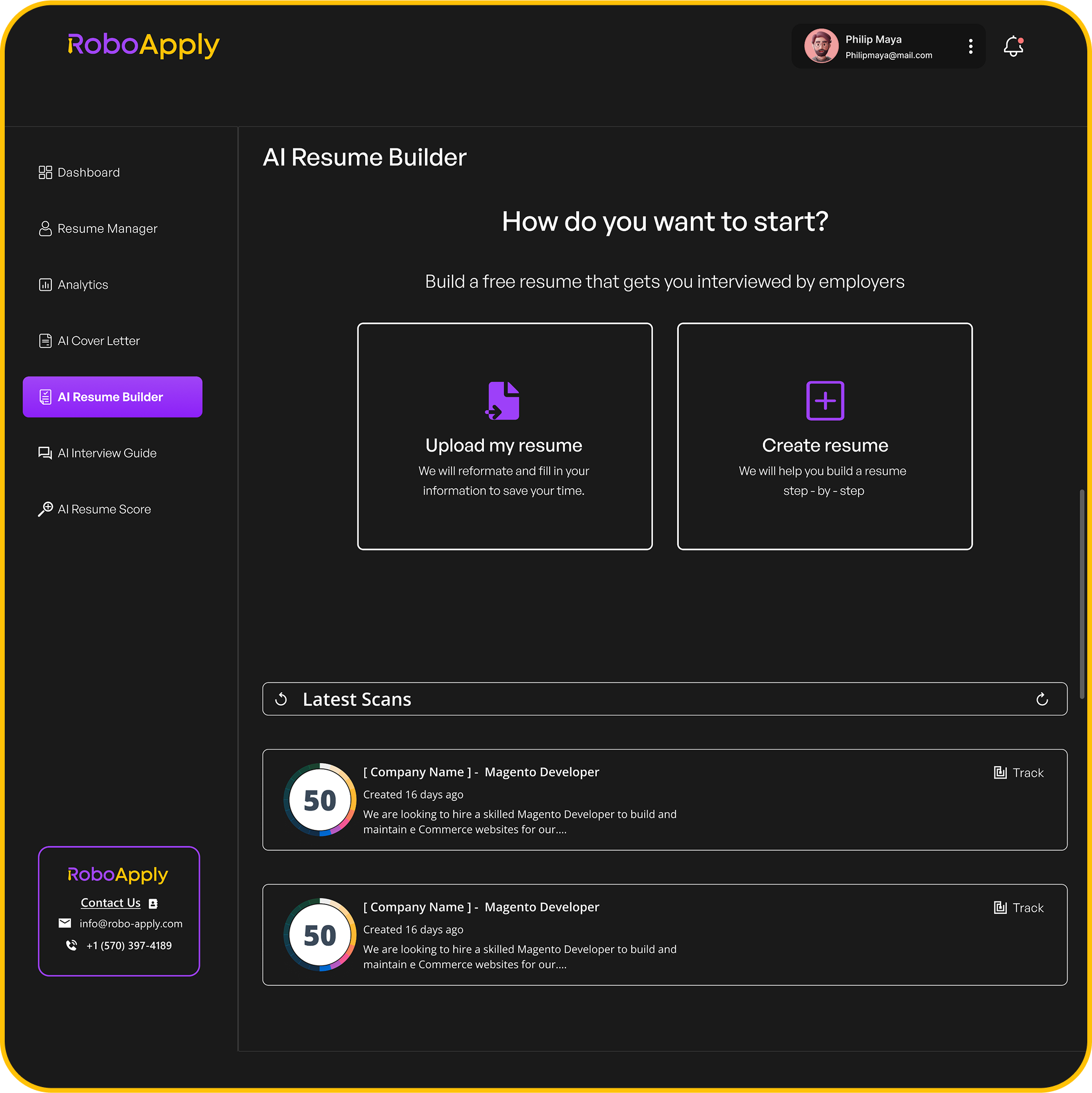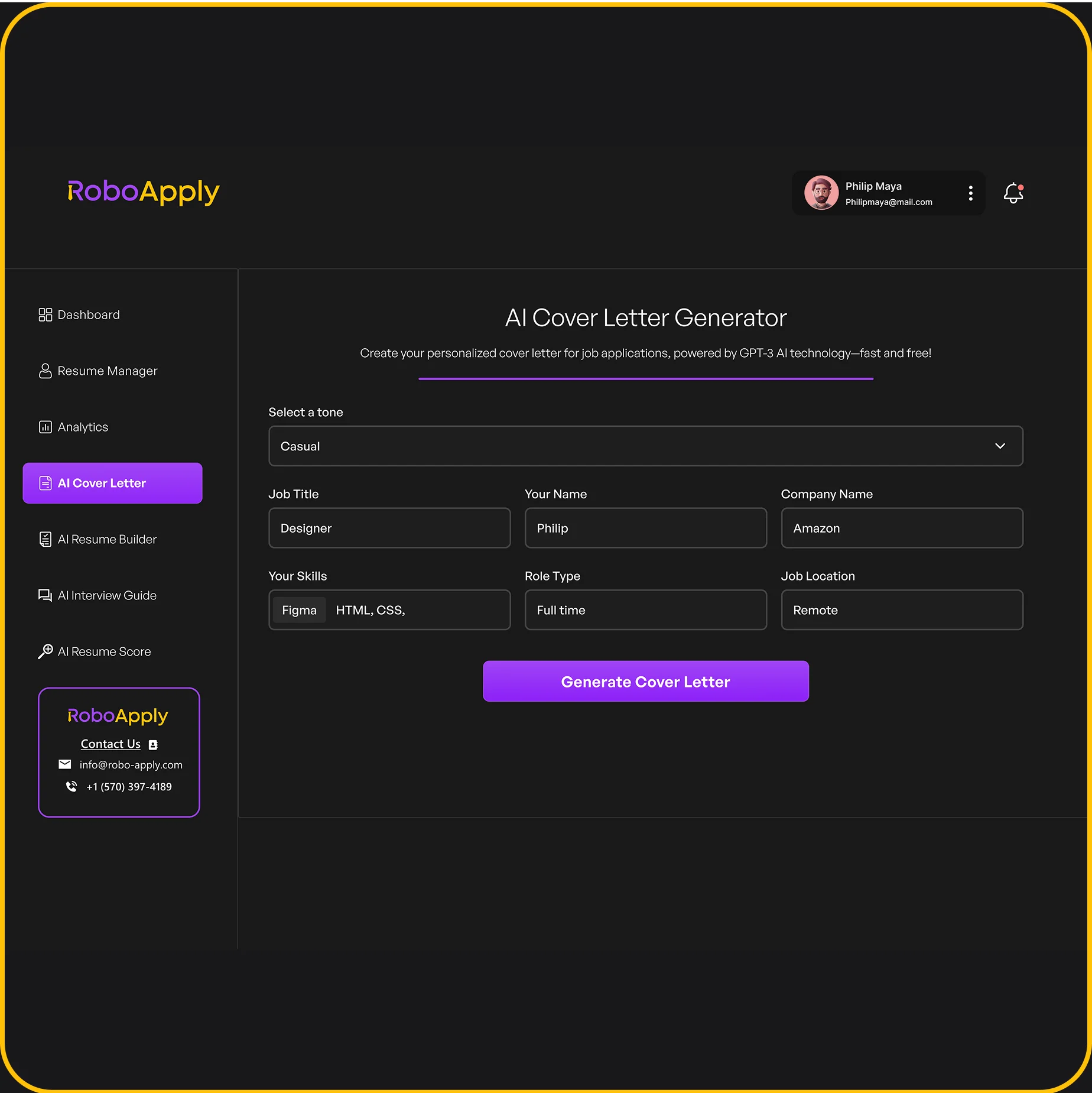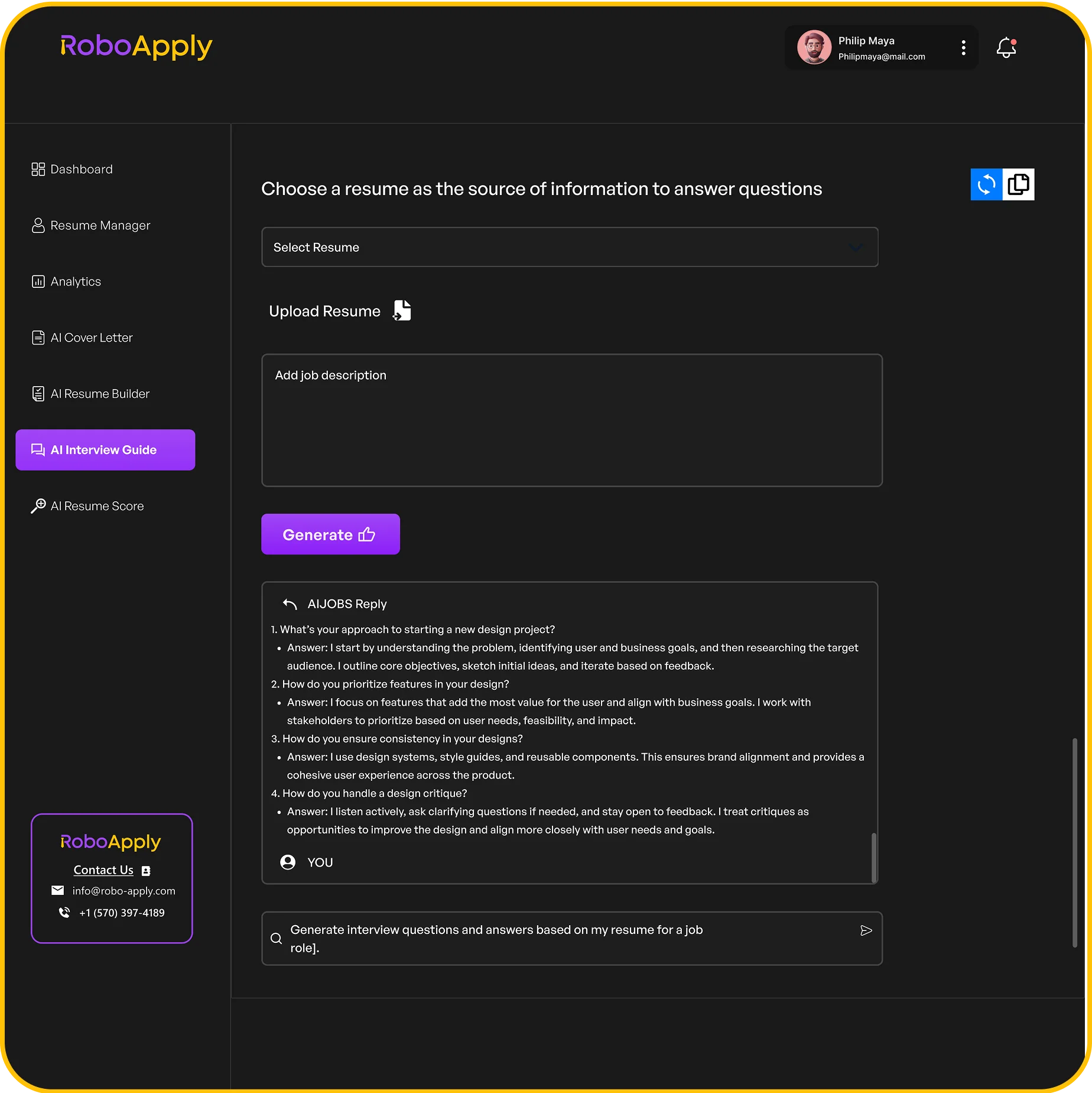Applying for jobs can feel overwhelming, especially when you’re faced with the task of writing a cover letter. It’s not just a formality; it’s your chance to make a great first impression. This guide will walk you through the essentials of crafting a standout cover letter for 2024. We’ll cover everything from understanding its purpose to avoiding common pitfalls, and even provide some sample letters to inspire you. Let’s get started!
Key Takeaways
- A cover letter complements your resume and showcases your personality.
- Tailor each cover letter to the specific job and company you’re applying for.
- Start strong with a compelling opening that grabs attention.
- Highlight your skills and achievements with specific examples and metrics.
- Keep your cover letter concise, ideally no longer than one page.
Understanding The Purpose Of A Cover Letter
Defining A Cover Letter
So, what is a cover letter, really? It’s more than just a formality; it’s your chance to shine beyond your resume. Think of it as your personal introduction to the hiring manager. It’s where you get to explain why they should pick you. A cover letter should complement, not duplicate, your resume. It gives you space to elaborate on achievements and skills. It’s also a great place to address any gaps in your employment history. It’s your story, told your way.
Importance In The Job Application Process
Why bother with a cover letter at all? Well, even though they aren’t always required, they still carry weight. Recruiters often use them to get a feel for candidates before diving into resumes. A recent study showed that a good chunk of recruiters actually prefer cover letters for explaining those pesky employment gaps. It’s a chance to provide context and show you’re more than just bullet points. Think of it as a way to enhance your candidacy and make a real impression.
How It Complements Your Resume
Your resume is a list of facts; your cover letter is the story behind those facts. It’s where you connect the dots and show how your experience aligns with the job. It’s not just repeating what’s already on your resume. It’s about adding depth and personality. For example, if you’re switching careers, the cover letter is where you explain why and how your skills transfer. It’s about showing you understand the company and the role. It’s about making a persuasive argument for why you’re the perfect fit. It’s a chance to show your qualifications and make a lasting impact.
A cover letter isn’t just a summary; it’s a narrative. It’s where you demonstrate your understanding of the company’s culture and values. It’s where you articulate your interest in the specific position. It transforms a standard application into a persuasive argument for your candidacy.
Key Components Of A Successful Cover Letter
Contact Information
Your cover letter needs to start with the basics: your contact information. This includes your full name, address, phone number, and email address. Make sure this information is accurate and up-to-date. It might seem obvious, but double-checking these details can prevent a missed opportunity. Also, consider adding a link to your LinkedIn profile if you have one. This gives the hiring manager an easy way to see your professional background. Think of it as your digital handshake. It’s like making sure your business card is current before handing it out at a networking event. You want to make it easy for them to reach out and remember you. This is the first step in making a good impression, so don’t overlook it. It’s all about making a connection right from the start.
Salutation
Addressing the hiring manager by name is a simple yet powerful way to personalize your cover letter. “Dear Mr./Ms./Mx. [Last Name]” shows you’ve done your research and aren’t sending out a generic letter. If you can’t find the hiring manager’s name, try to find the department head or someone else in a relevant position. If all else fails, “Dear Hiring Manager” is acceptable, but avoid using “To Whom It May Concern,” as it comes across as impersonal. It’s like walking into a room and greeting someone directly versus addressing the entire room. The personal touch makes a difference. It shows you care enough to find out who you’re talking to. This small effort can set you apart from other candidates. It’s about showing respect and making a connection from the very beginning. It’s a small detail, but it speaks volumes about your attention to detail and your genuine interest in the position.
Body Structure
The body of your cover letter is where you really sell yourself. It typically consists of three main paragraphs:
- Opening Paragraph: Grab the reader’s attention with a strong opening. Briefly introduce yourself and state the position you’re applying for. Mention how you found the job posting and what excites you about the opportunity.
- Middle Paragraphs: This is where you highlight your relevant skills and experiences. Use specific examples to demonstrate how you meet the job requirements. Quantify your achievements whenever possible to show the impact you’ve made in previous roles. Tailor this section to match the specific needs of the company and the position.
- Closing Paragraph: Reiterate your interest in the position and summarize your key qualifications. Thank the reader for their time and consideration. Include a clear call to action, such as requesting an interview or expressing your eagerness to discuss the opportunity further. End with a professional closing, such as “Sincerely” or “Best regards,” followed by your name.
Think of your cover letter as a story. The opening paragraph is the introduction, the middle paragraphs are the plot, and the closing paragraph is the conclusion. Each part needs to work together to create a compelling narrative that showcases your qualifications and enthusiasm.
Here’s a simple table to illustrate the structure:
| Paragraph | Purpose | Key Elements the cover letter is a key part of your job application. It’s your chance to make a strong first impression and show why you’re the right person for the job.
Crafting A Compelling Opening Paragraph
Making A Strong First Impression
Your cover letter’s opening paragraph is prime real estate. It’s your chance to grab the hiring manager’s attention right away. Think of it as your elevator pitch – short, sweet, and to the point. Don’t waste it on generic phrases like “I am writing to express my interest…” because, let’s be honest, they’ve heard it all before. Instead, aim for something that shows you’ve actually done your homework and are genuinely excited about the opportunity. A strong opening is the foundation of a successful cover letter.
Examples Of Compelling Openings
Okay, so what does a good opening actually look like? Let’s say you’re gunning for a Social Media Manager gig at a company known for its killer marketing campaigns. Here are a couple of options:
- “I was blown away by your recent campaign for [Specific Product/Service], especially how you used [Specific Social Media Platform] to engage a younger audience. I’m eager to bring my own creative ideas to the table and help [Company Name] continue to push boundaries.”
- “Having followed [Company Name]’s social media presence for some time, I’m impressed by your consistent brand voice and innovative content. As a Social Media Manager with [Number] years of experience, I’m confident I can contribute to your team’s continued success.”
- “Your company’s commitment to [Company Value] resonates deeply with my own professional values. I am excited about the opportunity to contribute to a team that prioritizes [Related Area] and believe my skills in [Specific Skill] would be a valuable asset.”
Tailoring Your Introduction
Tailoring your introduction is key. It shows you’re not just sending out the same generic cover letter to every company. Do your research! Find out what makes the company tick – their mission, their values, a recent project they’re proud of. Then, weave that into your opening paragraph. It shows you care, and that you’re not just looking for any job, but this job.
Think of your opening paragraph as a handshake. It should be firm, confident, and leave a lasting impression. It’s your chance to show the hiring manager why they should keep reading. Don’t waste it on generic fluff; make it count.
Highlighting Your Skills And Achievements
Showcasing Relevant Experience
When you’re trying to get a job, it’s not enough to just list what you’ve done. You need to show how your past jobs and experiences make you a good fit for this job. Think about the skills and experiences that are most relevant to the position you’re applying for. Don’t just say you have those skills; give examples of when you used them. For instance, if the job needs someone with project management skills, talk about a time you successfully led a project, what challenges you faced, and how you overcame them. This makes your cover letter more than just a list; it tells a story about why you’re the right person for the job. You can find more information about writing effective cover letters online.
Using Quantifiable Results
Numbers speak louder than words. Instead of saying you “improved sales,” say you “increased sales by 15% in the first quarter.” Using numbers, data, and metrics makes your achievements more real and shows the impact of your work. If you saved the company money, say how much. If you increased efficiency, say by what percentage. These details give the hiring manager a clear picture of what you can do for them. It’s about showing, not just telling, what you’re capable of.
Aligning Skills With Job Requirements
It’s super important to really read the job description. What skills and experiences are they really looking for? Once you know, make sure your cover letter shows how you have those skills. Don’t just repeat what’s in the job description; give examples of how you’ve used those skills in the past. If they want someone with strong communication skills, talk about a time you had to explain something complicated to someone who didn’t have a technical background. Or maybe you led a team and had to make sure everyone was on the same page. The more you can connect your skills to what they’re looking for, the better your chances of getting an interview.
Think of your cover letter as a sales pitch. You’re selling yourself, and you need to convince the hiring manager that you’re the best person for the job. Use examples, numbers, and stories to show why you’re the right choice. Make it easy for them to see how your skills and experiences match what they need.
Here are some key strengths to consider:
- Improved efficiency by 20% over six months, resulting in significant cost savings.
- Optimized a work process, saving the company 10 hours per week.
- Led a team of five to complete a project ahead of schedule and under budget.
Writing An Effective Closing Paragraph
Reinforcing Your Enthusiasm
Okay, so you’ve laid out your skills and experience, now it’s time to stick the landing. Don’t just fade out! You need to restate your excitement for the role. But, ditch the generic stuff like “I’m excited about this opportunity.” Instead, try something like, “I’m confident my passion for data analysis and experience with Python align perfectly with this role at Innovate Solutions.” See how that’s way more specific? It shows you’ve actually thought about why you want this job. It’s about making a lasting impression and showing you’re genuinely interested. This is where you really drive home why you’re the right fit. Make sure to restate your enthusiasm for the role.
Summarizing Your Value Proposition
Think of this as your final sales pitch. What are the two or three things you absolutely want the hiring manager to remember about you? Don’t just repeat your resume, though. Instead, connect your skills to what the company needs. For example: “My project management skills and experience leading cross-functional teams will allow me to contribute immediately to the Alpha Project.” It’s all about showing how you’ll bring value to the team. This is your chance to make it crystal clear why they should hire you. It’s not enough to just list skills; you need to show how those skills translate into benefits for the company. Make sure to summarize your value to the company.
Creating A Clear Call To Action
Don’t leave them hanging! Tell them what you want them to do next. A simple “I look forward to hearing from you soon” is okay, but you can be more direct. Try something like, “I am eager to discuss how my skills and experience can contribute to your team. I am available for an interview at your earliest convenience.” Make it easy for them to take the next step. And, of course, thank them for their time and consideration. It’s polite, and it reinforces your professionalism. End with a professional sign-off like “Sincerely” or “Best regards.” These are classic for a reason. Remember to use a professional sign-off at the end of your cover letter.
Your closing paragraph is your last chance to shine. Make it count by restating your enthusiasm, summarizing your value, and including a clear call to action. It’s the final piece of the puzzle that can make or break your application.
Common Mistakes To Avoid In Your Cover Letter
Overly Lengthy Or Too Brief
Cover letters should be concise. Aim for one page; hiring managers are busy. A letter that’s too long might not get read, but one that’s too short can seem like you didn’t put in enough effort. Find the right balance. Think of it like Goldilocks and the Three Bears – not too much, not too little, but just right. You want to provide enough detail to showcase your qualifications without overwhelming the reader. Focus on the most relevant points and skills.
Negative Language And Complaining
Keep your tone positive. Avoid complaining about past employers or experiences. Frame everything in a way that shows what you learned and how you grew. A cover letter should convey enthusiasm and optimism. No one wants to hire someone who sounds bitter or resentful. It’s like going on a first date – you want to present your best self, not air all your grievances. Focus on the future and what you can bring to the new role. For example, instead of saying, “My previous boss was terrible,” try, “I’m looking for a more collaborative environment where I can further develop my skills.”
Not Addressing Specific Requirements
Make sure your cover letter directly addresses the job description’s requirements. Use keywords from the posting and show how your skills and experience align with their needs. This shows you understand the role and have the qualifications. It’s like answering the question on an exam – you need to show that you understand what’s being asked and can provide a relevant response. Don’t just list your skills; explain how they relate to the specific job. This demonstrates that you’ve taken the time to understand the company’s needs and are genuinely interested in the position. Here are some things to keep in mind:
- Always tailor your letter to the specific job.
- Use keywords from the job description.
- Show how your skills meet the company’s needs.
A cover letter is your chance to make a strong first impression. Avoid common mistakes by keeping it concise, positive, and tailored to the specific job requirements. This will increase your chances of landing an interview.
It’s also important to avoid including irrelevant information that doesn’t support your application. Similarly, make sure you don’t include negative remarks about previous employers.
Personalizing Your Cover Letter For Each Application
It’s easy to think you can just send the same cover letter to every job. But trust me, taking the time to personalize each one makes a huge difference. It shows you’re not just mass-applying, but that you actually care about this specific job and this specific company. Let’s get into how to do it right.
Researching The Company
Before you even start writing, do your homework. I mean, really dig in. Check out their website, their social media, recent news articles, everything. You want to understand what they do, what they value, and what challenges they’re facing. This isn’t just about knowing their mission statement; it’s about getting a feel for their culture and goals. Knowing the company’s recent marketing campaign can help you tailor your cover letter to show your interest in the company’s culture.
Aligning With Company Culture
Okay, so you’ve done your research. Now, how do you show you’re a good fit? It’s not enough to just say you’re a team player. You need to demonstrate that you understand their values and how your skills align with them. For example, if they emphasize innovation, talk about a time you came up with a creative solution to a problem. If they value customer service, highlight your experience in exceeding customer expectations. Make sure your examples are specific and relevant to the company’s culture.
Using Specific Examples
Generic statements are a cover letter’s worst enemy. Instead of saying “I have strong communication skills,” give a concrete example. “In my previous role, I led a team that successfully launched a new product, resulting in a 20% increase in sales within the first quarter.” Numbers speak volumes. And always, always tailor these examples to the specific job requirements. If the job description mentions project management, talk about a successful project you managed. If it emphasizes data analysis, highlight your experience in analyzing data and drawing insights.
Personalizing your cover letter isn’t just about changing the company name. It’s about showing that you understand their needs and that you have the skills and experience to meet those needs. It’s about making a connection and demonstrating genuine interest. It takes time, but it’s worth it.
Here’s a quick list of things to consider:
- Company Values: What do they stand for?
- Recent Projects: What have they been working on?
- Job Requirements: What skills are they looking for?
Cover Letter Formatting Tips
Choosing The Right Font And Size
When it comes to your cover letter, think of it as dressing for an interview. You want to make a good impression right away. Choosing the right font and size is a simple way to do that. Stick with professional, easy-to-read fonts like Arial, Calibri, or Times New Roman. Font sizes should be between 10 and 12 points. Anything smaller can strain the reader’s eyes, and anything larger looks unprofessional. Consistency is key, so stick with one font throughout the entire document. This attention to detail shows you care about presentation. Using screen-friendly sans serif fonts such as Arial or Calibri ensures clarity and professionalism in your presentation.
Maintaining Professional Layout
Layout is super important. A cluttered or disorganized cover letter can be a turn-off. Keep it clean and simple. Use one-inch margins on all sides. Single-space your text and use a blank line between paragraphs. Avoid cramming too much information onto one page. White space is your friend! It makes the document easier to read and less intimidating. Also, make sure your contact information is clearly visible at the top. A professional layout shows you’re organized and detail-oriented. Think of it as creating a visually appealing and easy-to-follow roadmap for the hiring manager.
Using Proper Spacing
Spacing can make or break the readability of your cover letter. Too little spacing, and it looks like a wall of text. Too much, and it looks sparse and incomplete. Aim for balance. Single-space within paragraphs and double-space between them. Use bullet points or numbered lists to break up large blocks of text and highlight key skills or achievements. Pay attention to the spacing around your salutation and closing. Consistent spacing makes your cover letter look polished and professional. It shows you understand the importance of presentation and attention to detail.
Here’s a quick checklist to ensure proper spacing:
- Single-space within paragraphs
- Double-space between paragraphs
- Use bullet points or numbered lists for key information
- Consistent spacing around salutation and closing
Proper spacing is not just about aesthetics; it’s about making your cover letter easy to read and understand. A well-spaced document shows respect for the reader’s time and attention.
Cover Letter Examples For Different Industries
Marketing And Sales
When applying for marketing and sales positions, your cover letter should highlight your communication skills, your ability to drive results, and your understanding of market trends. Quantify your achievements whenever possible, such as “Increased sales by 20% in the last quarter.” It’s also good to show that you understand the company’s specific marketing challenges and how you can help solve them. For example, you might mention a recent campaign they launched and offer insights on how it could be improved. You can find some cover letter examples online to help you get started.
- Showcase your understanding of marketing principles.
- Provide specific examples of successful campaigns.
- Tailor your letter to the company’s brand and target audience.
A marketing cover letter should demonstrate not only your skills but also your passion for the field and your ability to think creatively and strategically.
Technology And IT
For technology and IT roles, emphasize your technical skills, problem-solving abilities, and experience with relevant software and hardware. Mention specific projects you’ve worked on and the technologies you used. If you have certifications or have contributed to open-source projects, be sure to include those details. It’s also important to show that you’re up-to-date with the latest industry trends. You can also find cover letter tips online.
- List your technical skills and certifications.
- Describe your experience with specific technologies.
- Highlight your problem-solving abilities.
Healthcare And Non-Profit
In the healthcare and non-profit sectors, your cover letter should focus on your compassion, empathy, and dedication to helping others. Highlight any relevant volunteer experience or community involvement. It’s also important to show that you understand the specific challenges and needs of the population the organization serves. If you have experience working with vulnerable populations or have a background in social work, be sure to emphasize those qualifications.
- Showcase your compassion and empathy.
- Highlight your volunteer experience.
- Demonstrate your understanding of the organization’s mission.
A cover letter for the healthcare or non-profit sector should convey your genuine desire to make a difference in the lives of others and your commitment to the organization’s values.
Utilizing Online Resources For Cover Letter Writing
Templates And Samples
Finding a good starting point can be tough, and that’s where online templates and samples come in handy. They provide a structure and format to follow, which can save you a lot of time and effort. You can find templates for various industries and experience levels. Just remember to tailor them to your specific situation. Don’t just copy and paste! Think of them as a guide, not a ready-made solution. For example, if you’re in marketing, look for marketing cover letter examples to get a sense of the language and skills to highlight.
Writing Tools And Software
There are many tools available online to help you write a better cover letter. These range from grammar checkers to AI-powered writing assistants.
- Grammar and spell-checkers like Grammarly can help you catch errors and improve your writing style.
- Thesaurus tools can help you find better words to express your ideas.
- AI writing assistants can help you generate content and refine your message.
Using these tools can significantly improve the quality of your cover letter, but it’s important to remember that they are not a substitute for your own critical thinking and creativity. Always review and edit the output of these tools to ensure that it accurately reflects your skills and experience.
Professional Writing Services
If you’re struggling to write a cover letter on your own, you might consider using a professional writing service. These services can provide you with a custom-written cover letter that is tailored to your specific needs and goals. Professional writers can help you highlight your strengths and present your qualifications in the best possible light. While it’s an investment, it can be worthwhile if you’re targeting a high-level position or need help crafting an effective cover letter.
The Role Of A Cover Letter In Networking
Leveraging Connections
Your cover letter can be more than just a document for applying to advertised positions; it’s a tool for networking. If you’ve been referred by someone, mentioning their name in the opening paragraph immediately grabs the reader’s attention. It shows you’re not just a random applicant but someone connected to their network. This can significantly increase your chances of getting noticed. For example, you might write, “[Referral’s Name] suggested I reach out regarding the Network Engineer position, knowing my background in relevant experience.”
Informational Interviews
Even if there isn’t a specific job opening, a well-crafted cover letter can be used to request an informational interview. This is where you express your interest in the company and ask to learn more about their work. Instead of directly asking for a job, you’re seeking advice and insights. This approach can open doors and create connections that might lead to future opportunities. Make sure to tailor your letter to show you’ve researched the company and understand their goals.
Follow-Up Communications
After attending a networking event or meeting someone at a conference, sending a follow-up cover letter can reinforce your connection. Remind them of your conversation and highlight any shared interests or experiences. This shows you’re proactive and genuinely interested in building a relationship. It’s also a chance to reiterate your skills and how they align with the company’s needs. Think of it as a personalized thank-you note that keeps you on their radar. Submitting a cover letter with your job application can make a difference.
Networking is about building relationships, and your cover letter is an extension of that process. It’s a chance to show your personality, express your enthusiasm, and make a lasting impression. By using it strategically, you can expand your network and create opportunities that might not otherwise exist.
Here’s a simple breakdown of how to use your cover letter for networking:
- Referrals: Always mention the name of the person who referred you.
- Informational Interviews: Request to learn more about the company and their work.
- Follow-Up: Reinforce connections made at networking events.
Preparing For The Job Application Process
Researching Job Descriptions
Okay, so you’re staring at a job description. Don’t just skim it! Really dig in. What are they actually asking for? What problems are they trying to solve? Understanding this is key to tailoring your entire application. I usually print them out and highlight the important stuff. It helps me focus. Think of it like cracking a code – the job description is the code, and you need to figure out how your skills match it. It’s not enough to just meet the minimum requirements; you want to show them you’re the ideal candidate.
Tailoring Your Resume
Your resume isn’t a one-size-fits-all document. It needs to be a laser-focused tool that highlights the experience and skills most relevant to the job you’re applying for. I know, it’s annoying to tweak it every time, but trust me, it’s worth it. Think of it as telling a story – you’re crafting a narrative that shows why you’re the perfect fit for this specific role. Don’t just list your responsibilities; show how you made a difference. Use numbers and data to quantify your achievements. For example, instead of saying “Managed social media accounts,” say “Increased social media engagement by 30% in six months through targeted content strategy.” That’s way more impactful. Make sure your cover letter format is also tailored to the industry you’re applying for.
Practicing Interview Skills
So, you’ve got the interview. Now what? Don’t just wing it! Practice, practice, practice. Seriously. Grab a friend, family member, or even your pet (if they’re good listeners) and do some mock interviews. The more you practice, the more comfortable you’ll be. Think about common interview questions and prepare your answers. But don’t just memorize them – you want to sound natural and authentic. Research the company and the interviewer beforehand. Show them you’re genuinely interested in the role and the company’s mission. And most importantly, remember to breathe! Here are some things to keep in mind:
- Prepare answers to common questions.
- Research the company and interviewer.
- Practice your STAR method responses.
It’s easy to get nervous, but remember, they invited you for a reason. They see something in your resume and cover letter that they like. Now it’s your chance to show them you’re the right person for the job. Believe in yourself, and you’ll do great.
Getting ready for the job application process is super important. You need to gather your resume, cover letter, and any other documents you might need. Make sure everything looks good and is up to date. If you want to make this process easier, check out our website for tools that can help you apply for jobs faster. Don’t wait—start your journey to your dream job today!
Wrapping It Up: Your Path to a Standout Cover Letter
So, there you have it! Writing a cover letter doesn’t have to be a huge headache. Just remember to keep it personal, show your excitement, and highlight what makes you a great fit for the job. Take your time to craft something that really reflects who you are and what you bring to the table. And don’t forget to proofread it! A clean, polished letter can make all the difference. With the tips and examples we’ve shared, you’re ready to tackle your cover letter with confidence. Good luck out there!
Frequently Asked Questions
What is the main purpose of a cover letter?
The main purpose of a cover letter is to introduce yourself to the employer and explain why you are a good fit for the job. It highlights your skills and experiences that relate to the position.
How long should my cover letter be?
Your cover letter should be about one page long. It should be long enough to include important information, but not so long that it becomes boring.
Do I need to personalize my cover letter for each job?
Yes, you should personalize your cover letter for each job application. This shows the employer that you are genuinely interested in their company and have taken the time to understand the role.
What should I include in the opening paragraph?
In the opening paragraph, mention the job you are applying for and how you found out about it. You should also include something specific about the company that excites you.
How can I highlight my skills effectively?
To highlight your skills, use specific examples from your past experiences that show how you used those skills to achieve results. Numbers and achievements make a stronger impact.
What mistakes should I avoid in my cover letter?
Avoid making your cover letter too long or too short, using negative language, and not addressing the specific requirements of the job. These mistakes can hurt your chances.
How can I make a strong closing statement?
In your closing statement, restate your interest in the job, summarize your key strengths, and include a clear call to action, like stating your availability for an interview.
Are there any tools to help me write my cover letter?
Yes, there are many online tools and templates available that can help you write your cover letter. You can also use grammar checkers to improve your writing.

